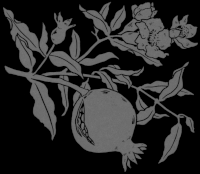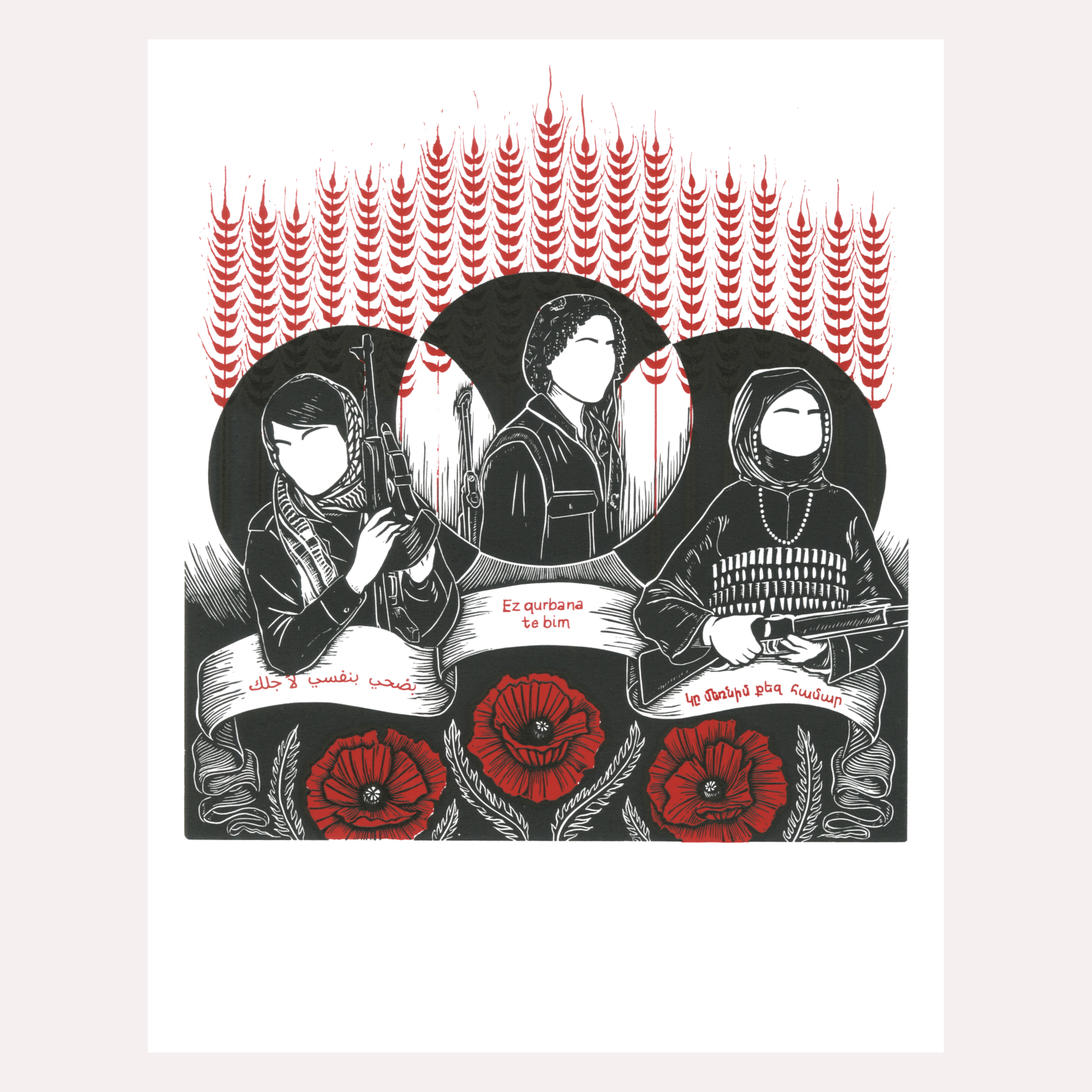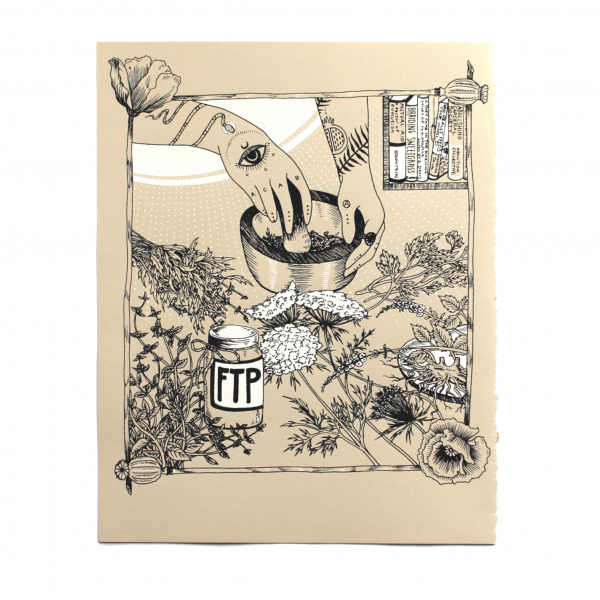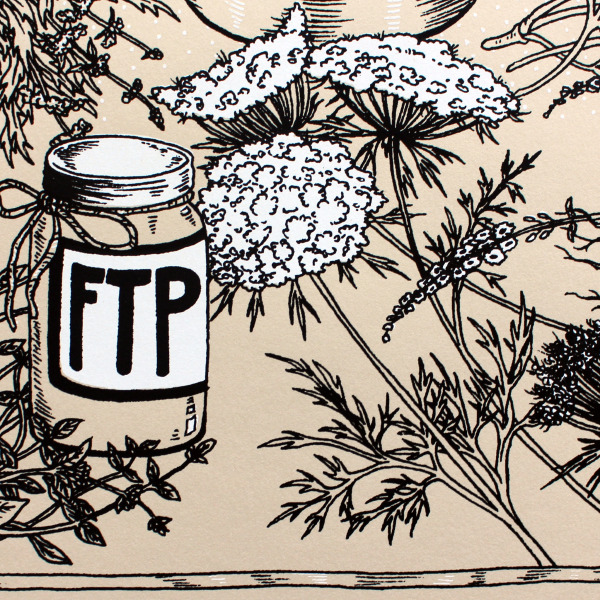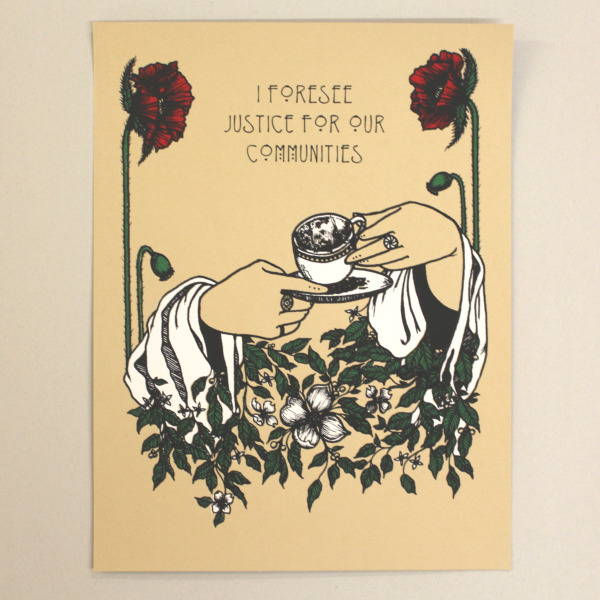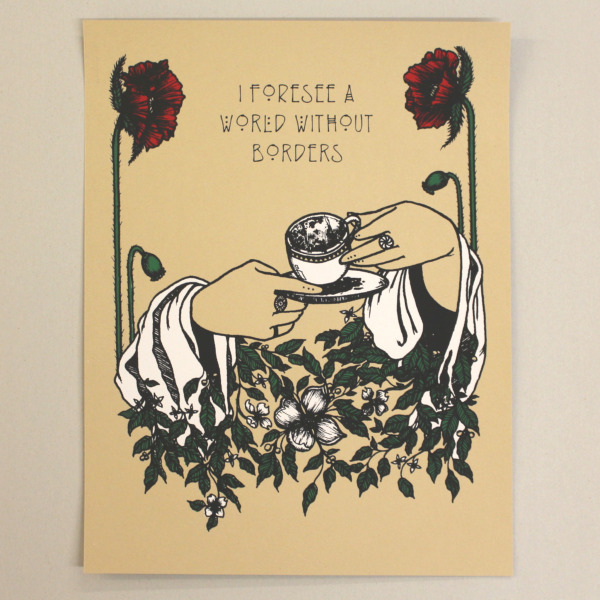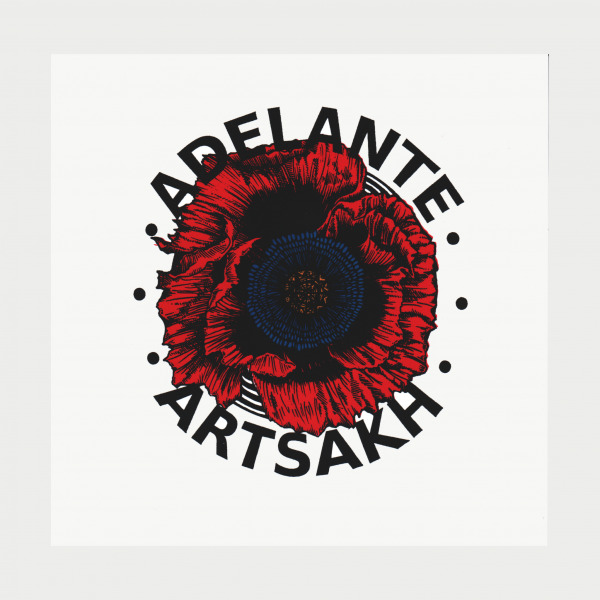Our Promise print
$60.00
In stock
This print celebrates the resilience, sacrifice and strength of SWANA freedom fighters throughout history and the solidarity that exists. It was originally inspired by an article I read about an exhibition held in Tatvan, a district of Bitlis that was highlighting the Armenian presence in the region. My ancestors are from Bitlis, now within the borders of modern day Turkey. Here is an excerpt from the article in the Armenian Weekly:
The Gomidas Institute’s press release gave a short description of Armenian history and life in Bitlis: “Armenians trace their presence in Bitlis since antiquity. Bitlis was one of the Armenian principalities of the ancient world and continued to be a major Armenian center until recent times. On the eve of World War I, it was a thriving part of the Ottoman Empire with a significant Armenian population with its many schools, churches, and monasteries.”
The press release also pointed out the social and political setting against which the exhibition would take place: “In recent years, with the Kurdish opening, it has become possible to talk about Armenians again. The Turkish state has even made a somewhat cynical gesture in the east by renovating the ancient church of Sourp Khatch on the island of Aghtamar and turning it into a museum—while hundreds of comparable sites have continued to be neglected and destroyed. However, Kurdish politicians have been more honest and forthright. They have condemned the persecution of Armenians, apologized for the role played by Kurds in those persecutions, and sought reconciliation by speaking the truth. In Diyarbekir, the local authorities have supported the renovation of the church of Sourp Giragos, returned it to Armenians as their place of worship, and offered their hand of friendship. It is against such a background that the Gomidas Institute and its friends in Turkey have organized a public exhibition about the Armenians of Bitlis before 1915. This exhibition, displaying original maps of the Armenian presence in the region and photographs, will take place in Tatvan, on the shores of Lake Van, on 1-2 March and travel to different communities in the Armenian Diaspora.”
On March 1, the first day of the exhibition, two new BDP local election offices were opened, and a rally was organized with the “Peace Mothers,” as they call them—the mothers of Kurdish guerillas, some killed, some lost; their families do not know of their whereabouts. It was easy to identify them from a distance, because all of the Peace Mothers wore large and long white shawls to cover their heads and shoulders, made of very thin cotton. The highpoint of the day—a day full of warm reception and stories of Islamized Armenian grandmas and grandpas—was when one of the Peace Mothers came, almost stormed in, went up to Sarafian (the founder and director of the Gomidas Institute), hugged him tightly, and with tears in her eyes said, “Ez Qurbana te bim” in Kurdish, which literally means, “I would die for you,” a powerful expression of affection. The word Qurban/Kurban is a common word in Turkish, Kurdish, and the local Armenian dialect and signifies “sacrifice.” While still holding him, she continued to speak in Kurdish, with Betul trying to catch up with her words to translate them to Sarafian. “Welcome my dear son. Thank you for bringing this to us. How happy I am to see you here. Your people are my people… My grandfather was Armenian… You look so much like my uncle. He was dark-skinned just like you with dark eyebrows and eyes.”
This moving and beautiful occurrence was really the jumping off point to this piece. This shared history, dynamic and fluctuating, must center the sacrifice of the people who struggle and continue to struggle. The fight for the people, the land, dignity, and self-determination was not just carried out by men. I wanted to celebrate all the women who sacrificed their lives or their more common roles for the struggle. This print highlights just three movements and people from the region:
Left: This image is inspired from the famous photo of Leila Khaled and a popular symbol of Palestinian liberation. Leila is a Palestinian refugee and member of the Popular Front for the Liberation of Palestine, a resistance movement formed in 1967 to struggle against the Israeli occupation of Palestine – for which Leila was an activist and leader. Leila’s fight for Palestine is not due to an old, ancient attachment to her land. Her parents are not Palestinian, but Lebanese and it is a love of justice that moves her. For Leila between two imposed options, that of submissively walking to collect a blanket and a ration card, and that of taking up a Kalashnikov, she chose the latter. The PFLP does not view the Palestinian struggle as a religious one, seeing it instead as a broader revolution against Western imperialism. Women have been active in the Palestinian struggle since its early days. In the 1920s, they protested side by side with men against British control of their country.
Center: The story of Kurdish women is symbolic of the greater Kurdish struggle for independence and self-government. For decades, women in Kurdistan have been standing up against suppressive governments and patriarchal society. The Kurds are one of the world’s largest peoples without a state, making up sizable minorities in Iran, Iraq, Syria, and Turkey. Their century-old quest for independence is marked by marginalization and persecution. Kurdish women from Syria and Turkey are taking up arms in the fight for their own autonomous state. They are waging war on the patriarchy — including enemy combatants of Turkish state forces, ISIL slave-traders, and all foreign aggressors. The land cannot be free when women are not free. These women have been fighting for a free Kurdistan for over 30 years – around 40% percent of the PKK’s troops are women, and Kurdish women make up the majority of fighters in the all-women militia of the YPJ, noted for it’s defense of revolutionary Rojava. This photo is inspired by multiple photos of these women struggling for freedom today.
Right: Armenian fedayi’s were civilians, including many women, who voluntarily left their families to form self-defense units and irregular armed bands in reaction to the mass murder of Armenians and the pillage of Armenian villages in late 19th and early 20th centuries. Their ultimate goal was always to gain Armenian autonomy (Armenakans) or independence depending on their ideology and the degree of oppression visited on Armenians. In the words by Sophia Armen in their article “Armenians, Feminism is our Past and Future” published by AWID: “…they are more accurately described as dedicated organizers, characterized by their firm commitment to their communities, resisting the oppressive foreign forces attempting to dictate the terms of their Armenian struggle, and ultimately for their passionate vow to fight for their loved ones even in the face of great personal sacrifice. Their feminism is an indigenous one, and deeply connected to the fate of their entire communities. Armenian history is not devoid of progressive womxn activists and revolutionaries, it is in fact defined by them.” The Armenian term fedayi is ultimately derived from Arabic fedayeen: فدائيون fidā’īyūn, literally meaning “those who sacrifice”.
1/2 of the proceeds of these prints go to the CSPP (Center for the Study & Preservation of Palestine) in Portland. The CSPP has officially partnered with the Warms Springs Tribal Emergency Management Program to get needed supplies to the Warm Springs community via their Care Camel Program. To contribute funds directly to this effort you can use cashap: $carecamelpdx or venmo: @cspppdx
“On behalf of all Palestinians, we know that marginalization and suffering are global symptoms of all colonialism and occupation and economic classicism, so we will always stand in solidarity with those who are afflicted, near and far. Always. PDX 2 Palestine” – CSPP
| Weight | 5 oz |
|---|---|
| Dimensions | 11 × 14 in |
